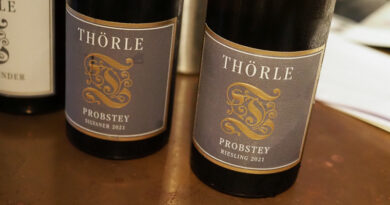The price of wine: how much should you charge?
How much should you charge for your wine? This isn’t an easy question to answer. If you are playing at the bottom end of the market, with volume, then your route to market will likely involve trying to negotiate with a supermarket buyer. A good buyer will tell it straight: if you want to stick to price X, then we will be able to sell Y number of cases. But if you are able to soften your price by this much, then we can sell five times the number of cases. This end of the market is highly price sensitive and that’s the reality. You want to play here? You have to hit certain price points.
But what about wines that we often describe as ‘fine’? Here, those wines that are traded regularly have a market value. You can easily find out the going rate for a bottle of 1990 Leoville Barton because most of the classed growth Médoc wines are made in decent quantities and they are regularly changing hands.
For wines that don’t make it to the secondary market it’s more difficult. It’s also trickier for wines that, while collectible, are made in smaller quantities, simply because they are traded less frequently. Many are swallowed up on release by collectors who then cellar and drink them, and rarely sell them.
A lot of producers allow the market to set their price. When supply and demand are factored in along with perceived quality, the wine has a certain value, and if the producer releases the wine at below the market value then someone else will make their margin. Take the top Bordeaux Châteaux: they sell a significant proportion of their production en primeur through La Place, and setting the price is always a delicate game. They want the wine to sell, and to do this there has to be a benefit for their customers to buy en primeur in terms of some upside for those who are willing to commit their cash early. But not too much of an upside. Remember, this release price will effectively be determining the value of stock they are holding onto.
What about wines that become famous and because of small production escalate in value on the grey or secondary market? Not every producer is interested in maximising their financial potential. Some producers are uncomfortable with too much attention because this complicates their life and gets in the way of their work. They don’t want to make a lot of money; just enough. If the market value of their wine increases because of insane demand and limited production, then they face a dilemma. If they put their prices up significantly, then they will alienate a customer base they have spent many years obtaining. Relationships will be strained, and they will have a new set of customers who may not turn out to be loyal. Their work may be less satisfying, and if they become the most famous producer in their region, as well as their wines becoming rare and expensive, they will have hordes knocking at their door wanting to visit.
The solution for some of these producers is to continue to sell their wines at reasonable prices, and keep on making a good enough living with full job satisfaction, but then to take care in who they allocate their wines to. If they are careful, then these wines won’t make it to the secondary market. Their loyal customer base isn’t disenfranchised. Of course, anyone who gets these wines then has the potential to make a significant profit from their allocation. But this isn’t in the spirit of the transaction made with that producer.
I think it’s incredibly crass and disrespectful to make lots of money out of flipping rare wines where this goes against the ethos of the producer who sold them to you, or where you got an allocation from the agent of a producer with this sentiment.
At the top end of the market, pricing can be complicated and surprising. Sometimes, wines that increase in price become more desirable. This is wine as a Veblen good: the more expensive it is, the more desirable it is – although the wine and the customer base have to be right for this to work. This is where we enter the realm of wine as a luxury good. Prestige Champagne brands fit in here. And there will always be some chancers who stick a silly price tag on a bottle in order to get attention.
And then we have restaurant pricing of wine. I spend a lot more on wine when I go to a restaurant than I would if I’m drinking at home, and I don’t even blink. This is because I am paying to drink this wine in that particular place, with that food. But there’s one condition: the restaurant must have done some work with their wine list, and I don’t necessarily expect to pay the same GP all the way up the list – as the wines get more expensive, then moving towards more of a cash margin makes me willing to climb the list to pricier bottles.
Deciding how much to charge for your wine is a complicated business, particularly for newcomers. And then we have the added dimension: assuming you make more than one quality tier, how is the differential pricing among these tiers decided on? Do you rob the rich to pay the poor, in terms of charging a lot for the top wines but making lower tiers significantly cheaper? Food for thought.




